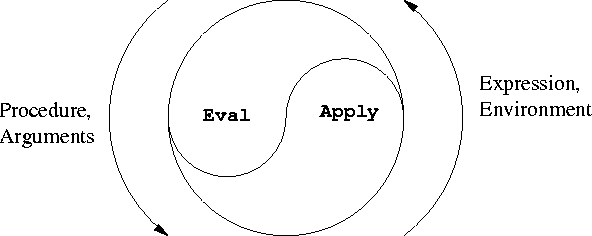Exercise 1.
Load the scheme-1 interpreter from the file
~cs61as/lib/scheme1.scmTo start the interpreter, type (scheme-1). Familiarize
yourself with it by evaluating some expressions. Remember: you have
all the Scheme primitives for arithmetic and list manipulation; you
have lambda but not higher-order functions; you don't have define.
To stop the scheme-1 interpreter and return to STk, just
evaluate an illegal expression, such as ().
1a. Trace in detail how a simple procedure call such as
((lambda (x) (+ x 3)) 5)is handled in scheme-1.
1b. Try inventing higher-order procedures;
since you don't have define
you'll have to use the Y-combinator trick, like this:
Scheme-1: ((lambda (f n) ; this lambda is defining MAP
((lambda (map) (map map f n))
(lambda (map f n)
(if (null? n)
'()
(cons (f (car n)) (map map f (cdr n))) )) ))
first ; here are the arguments to MAP
'(the rain in spain))
(t r i s)
1c. Since all the Scheme primitives are automatically available
in scheme-1, you might think you could use STk's
primitive map function. Try these examples:
Scheme-1: (map first '(the rain in spain))
Scheme-1: (map (lambda (x) (first x)) '(the rain in spain))
Explain the results.
1d. Modify the interpreter to add the and special form. Test
your work. Be sure that as soon as a false value is computed, your
and returns #f without evaluating any further arguments.
